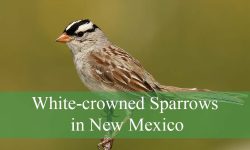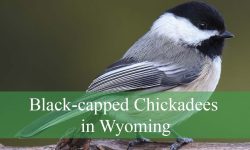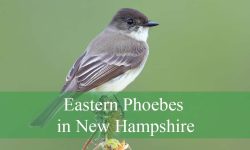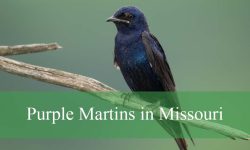The Lone Star State offers birders a chance to admire orange species of every kind, from dazzling orioles to fiery flycatchers and tanagers. Their vivid plumage adds splashes of color to deserts, forests, and backyards across the state.
Each species carries its own charm, whether it’s the Baltimore Oriole stopping by during migration or the Altamira Oriole residing year-round in the Rio Grande Valley. These birds are not only beautiful but also fascinating to observe.
In this guide, you’ll discover 13 orange birds found in Texas, complete with identification details, habitats, and tips on when and where to see them. Birdwatchers of all levels will enjoy learning about these striking species.
Types of Orange Birds Found in Texas
Baltimore Oriole (Icterus galbula)
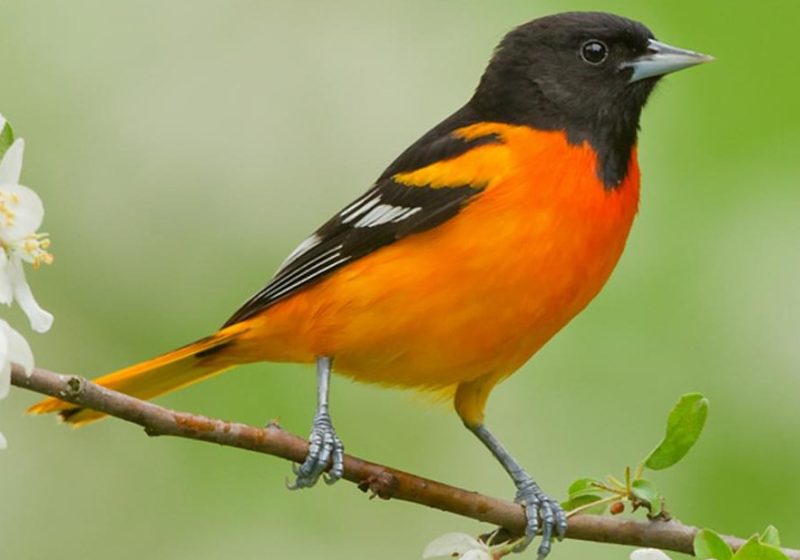
The Baltimore Oriole is one of the most recognizable orange birds in Texas, especially during spring and fall migration. Males are known for their striking orange plumage paired with a jet-black head, wings, and back. Their contrasting colors make them easy to spot among the green foliage. Females and immature birds, on the other hand, have softer shades of yellow-orange and grayish wings, giving them a more subtle appearance.
These orioles are medium-sized songbirds, measuring about 6.5 to 7.5 inches long, with a slender body and long tail. Their sharp, slightly curved beak is well-suited for feeding on fruit, nectar, and insects. Birdwatchers often notice them darting quickly between branches, searching for food or weaving intricate hanging nests. Their distinctive, flute-like songs add a musical presence to parks, gardens, and woodlands.
In Texas, Baltimore Orioles are primarily migrants, passing through in large numbers during spring and fall. They breed farther north, but Texas serves as an important stopover along their migration route. During these journeys, they are frequently attracted to backyards with nectar feeders, oranges, or jelly set out by bird enthusiasts.
Their preferred habitats include open woodlands, riversides, and suburban areas with large trees. Orioles are most active in early morning and late afternoon, when they feed and vocalize. For Texans who enjoy backyard birding, setting up oriole feeders in April and September provides the best chance of attracting these stunning orange songbirds.
Orchard Oriole (Icterus spurius)
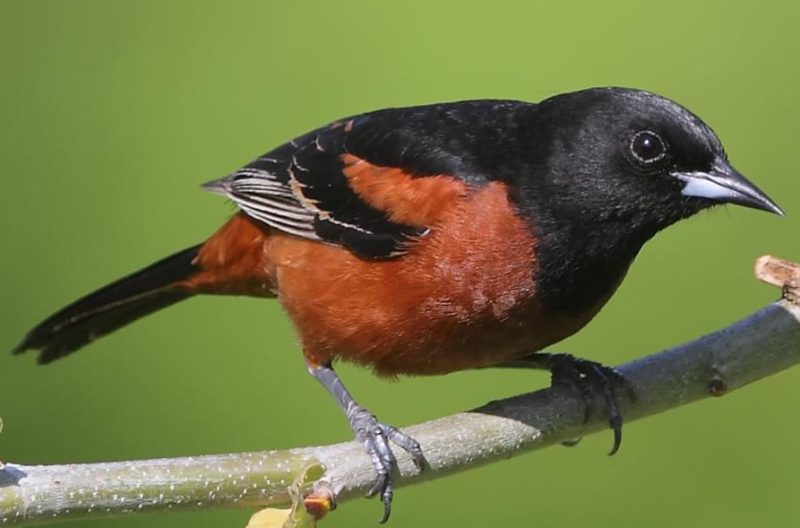
Smaller and less vibrant than the Baltimore Oriole, the Orchard Oriole is still a striking sight in Texas. Adult males display a deep chestnut-orange belly with a glossy black head, back, and wings. Females and immature birds are yellow-green overall, which makes them blend more easily into their surroundings. Despite their size, these orioles are active, agile, and easy to identify once you get familiar with their rich chestnut coloration.
Orchard Orioles measure about 6 to 7 inches in length, making them the smallest North American orioles. Their slender bodies and sharp bills help them catch insects and sip nectar from flowers. They also eat fruit, especially during the summer months. Their song is a series of rich whistles and chatters, often delivered while perched on exposed branches.
In Texas, Orchard Orioles arrive in the spring to breed and can be found across much of the state throughout summer. They prefer open habitats such as orchards, pastures with scattered trees, riverbanks, and suburban gardens. Their nests are finely woven hanging baskets, suspended from the tips of tree branches and often hidden among leaves.
Because of their preference for insects, Orchard Orioles play a valuable role in natural pest control. They are frequently seen foraging in groups, sometimes joining mixed flocks with other songbirds. By late summer, they begin their southward migration to Central America, leaving Texas until the following spring.
Eastern Towhee (Pipilo erythrophthalmus)
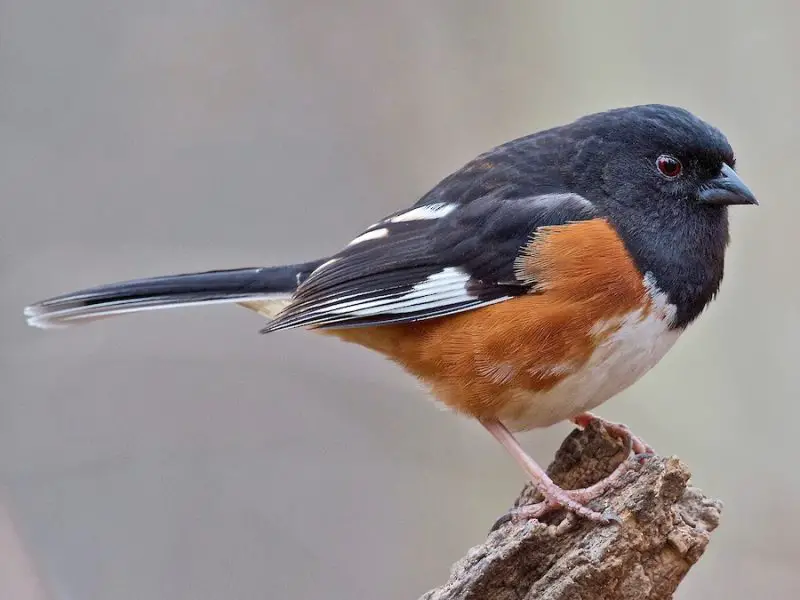
The Eastern Towhee is a striking bird that adds a warm burst of orange to Texas woodlands and brushy edges. Males are easily recognized by their bold black heads, backs, and wings, contrasted with bright orange flanks and a clean white belly. Females share the same pattern but replace the black with rich brown tones, making them equally eye-catching yet more subdued in appearance.
This species measures about 7 to 8 inches in length, with a wingspan close to 9 to 11 inches. It is often heard before it is seen, producing a distinctive “drink-your-tea” song that resonates through thickets. Towhees are ground feeders, frequently scratching noisily in leaf litter as they search for insects, seeds, and berries. Their foraging behavior makes them noticeable to patient birdwatchers.
In Texas, Eastern Towhees are found mostly in the eastern and northeastern parts of the state, where dense undergrowth provides the cover they prefer. They are residents in some areas, while in others they appear seasonally, especially during cooler months. Their adaptability to shrubby habitats allows them to thrive in both wild forests and semi-urban green spaces.
Eastern Towhees play an important role in their ecosystems, helping control insect populations and dispersing seeds through their varied diet. Their combination of vivid orange flanks, bold plumage contrasts, and distinctive calls makes them a memorable addition to the list of orange birds in Texas, particularly for birdwatchers exploring the thickets and forest edges of the state.
Altamira Oriole (Icterus gularis)

The Altamira Oriole is the largest oriole found in North America, and it is a year-round resident of southern Texas, particularly in the Rio Grande Valley. Males and females look alike, both displaying a vivid orange body paired with black wings, tail, and throat. Their striking appearance sets them apart from other orioles, making them a prized sighting for birdwatchers.
These orioles measure about 9 inches in length, larger and bulkier than most other members of their family. Their long, strong bills allow them to feed on a wide range of foods, including insects, fruit, and nectar. Their vocalizations are a series of rich whistles and chatter, which carry far in open habitats.
Altamira Orioles prefer open woodlands, forest edges, and subtropical scrublands. They are particularly associated with areas that have scattered tall trees, where they can forage and nest. Unlike migratory orioles, Altamiras remain in Texas year-round, making them one of the few orange birds that can be reliably observed in the state at any time of year.
Their nesting behavior is remarkable, as they weave long, hanging basket nests that may measure up to two feet in length. These nests are suspended from high branches, often in isolated trees, providing protection from predators. Because of their limited range within the United States, the Altamira Oriole is considered a specialty bird of Texas and a highlight for visiting birders.
Hooded Oriole (Icterus cucullatus)
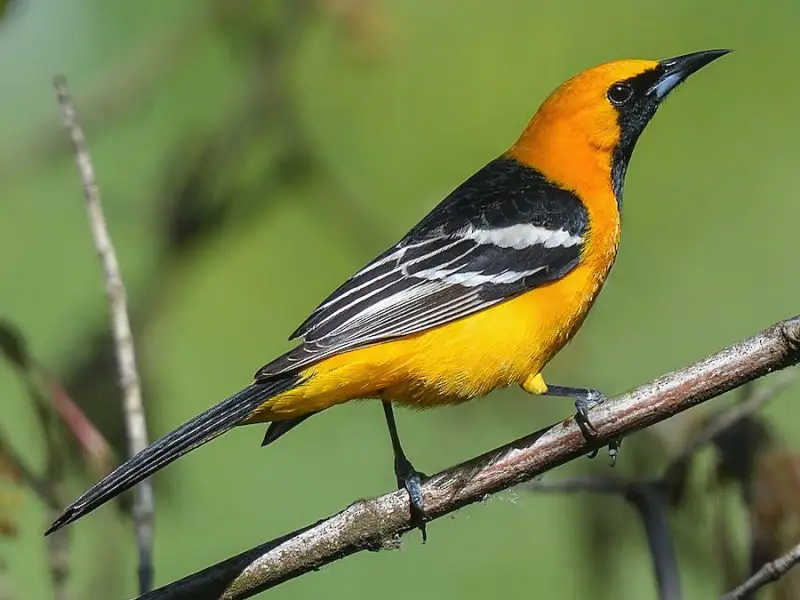
The Hooded Oriole is another colorful resident of Texas, particularly common in the central and southern parts of the state. Males exhibit bright orange to yellow-orange plumage with a black throat, face, and wings, while females are primarily yellow-green with faint markings. Their vivid coloration and elegant body shape make them stand out in palm groves and suburban gardens.
These orioles are medium-sized birds, measuring about 7 to 8 inches long. They are agile and slender, with slightly curved bills adapted for sipping nectar and eating insects. Their song is a series of whistles and chatters, often less melodic than the Baltimore Oriole but still distinctive. They are also known for their high-pitched calls, which help them stay in contact with their mates.
Hooded Orioles in Texas are frequently associated with ornamental palm trees, where they nest and forage. They weave pouch-like nests that hang from palm fronds, blending in with the surrounding vegetation. They are also attracted to hummingbird feeders, where they compete with other nectar-loving species for sugary treats.
Their distribution within Texas extends from the Rio Grande Valley northward into central regions, especially during the breeding season. They are summer residents in most of their range, migrating south to Mexico for the winter. However, in southernmost Texas, some populations remain year-round. Their adaptability to urban areas makes them one of the more familiar orange birds in the state.
Bullock’s Oriole (Icterus bullockii)

Bullock’s Oriole is a brilliant orange bird that breeds across parts of Texas, especially in the western and northern regions of the state. Adult males display a striking mix of orange, black, and white, with a black cap, throat, and eye line contrasting against a bright orange face and underparts. Females are more subdued, showing pale orange-yellow plumage with gray wings, making them trickier to identify.
These orioles are medium-sized, about 7 to 8 inches long, with a long tail and slender, pointed bill. Their vivid coloration is complemented by their musical whistles, which consist of short, sweet notes. Bullock’s Orioles are active and often forage high in trees, searching for insects, spiders, and fruit. They also visit nectar feeders, making them a welcome guest in Texas backyards.
In terms of habitat, Bullock’s Orioles prefer riparian woodlands, open forests, and areas with tall deciduous trees. They are often spotted along riversides, where cottonwoods and willows provide excellent foraging and nesting sites. They are migratory, spending the breeding season in Texas before traveling to Mexico for the winter.
Their nesting behavior is notable, as females weave hanging, sock-like nests suspended from thin branches. These nests are intricately crafted from plant fibers and animal hair, making them both strong and flexible. For birders in Texas, the arrival of Bullock’s Orioles in spring is always an anticipated event, adding both color and song to the landscape.
Scott’s Oriole (Icterus parisorum)
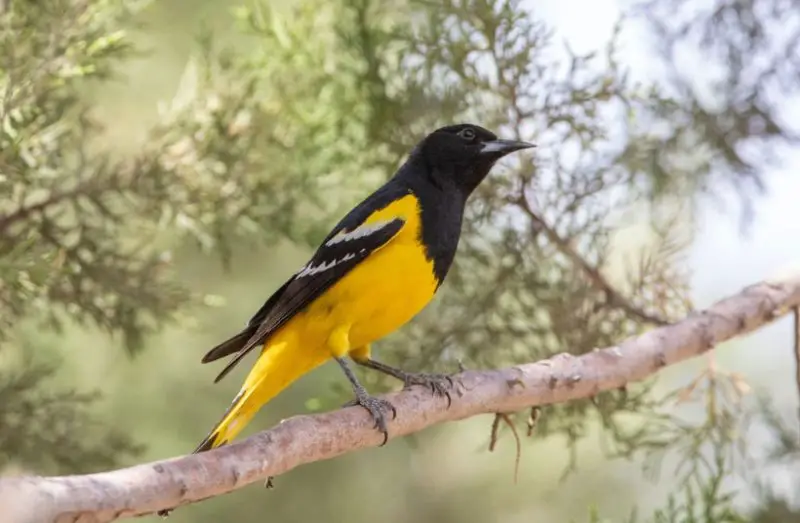
Scott’s Oriole is another spectacular bird that can be found in Texas, especially in the western deserts and mountainous regions. Adult males are unmistakable, with a lemon-orange breast and belly paired with a black head, throat, wings, and back. Females and immature birds show yellow-orange plumage with less contrast, but they are still vibrant and easy to recognize.
This oriole is slightly larger than the Orchard Oriole, measuring about 8 to 9 inches long. Its bright orange-yellow body stands out against the arid landscapes it inhabits. Scott’s Orioles are also known for their loud, whistling songs, which echo across desert slopes and rocky hillsides. Their song is one of the most musical among North American orioles.
In Texas, Scott’s Orioles favor open desert habitats, yucca stands, and scrubby hillsides. They are often associated with agave and yucca plants, where they forage for insects and nectar. Their diet also includes fruit and berries, making them flexible feeders well-suited to the harsh environments of West Texas.
Their nesting sites are often unique, as they frequently weave their nests into the leaves of yucca plants, suspending them securely among the sharp blades. This adaptation helps protect their nests from predators while taking advantage of the plant’s structure. For birders exploring Big Bend or other desert regions, Scott’s Oriole is a prized and unforgettable sighting.
American Redstart (Setophaga ruticilla)
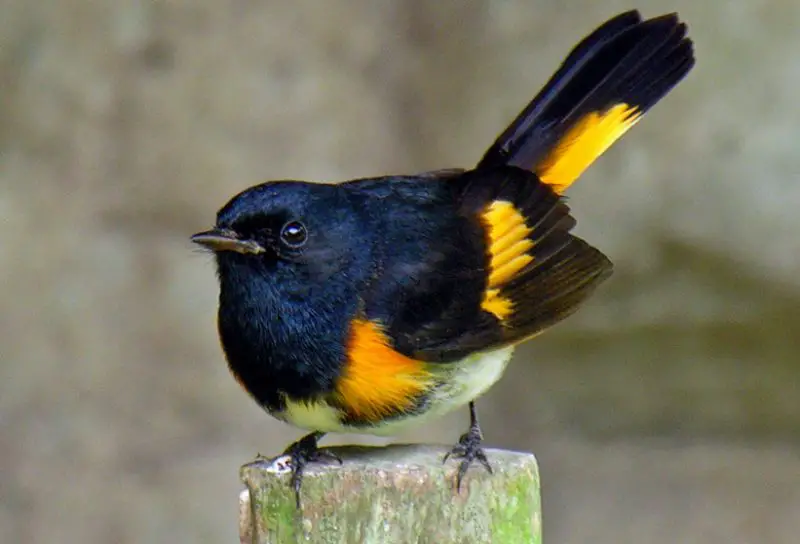
Although not entirely orange, the American Redstart is known for its bold orange patches that stand out vividly against its dark plumage. Adult males are primarily black with bright orange patches on their wings, sides, and tail, while females and immature males are gray or olive with softer yellow-orange highlights. Their striking tail-fanning behavior makes them easy to identify.
This small warbler measures about 4.5 to 5 inches in length, with a slim body and long tail. Unlike orioles, which often perch conspicuously, American Redstarts are active and constantly in motion. They flit through trees and shrubs, spreading their tails and flashing their orange patches to startle insects into flight, which they then catch midair.
In Texas, American Redstarts are primarily seen during migration, as they travel between their northern breeding grounds and wintering habitats in Central and South America. They pass through in both spring and fall, especially in wooded areas, parks, and riparian zones where insects are abundant.
Their songs are high-pitched and variable, often consisting of short, repeated notes. Males sing persistently during migration and breeding season, while females are more secretive. Although they do not breed in Texas, their brief but colorful presence during migration adds excitement for birders who keep an eye out for orange flashes among the trees.
Western Tanager (Piranga ludoviciana)
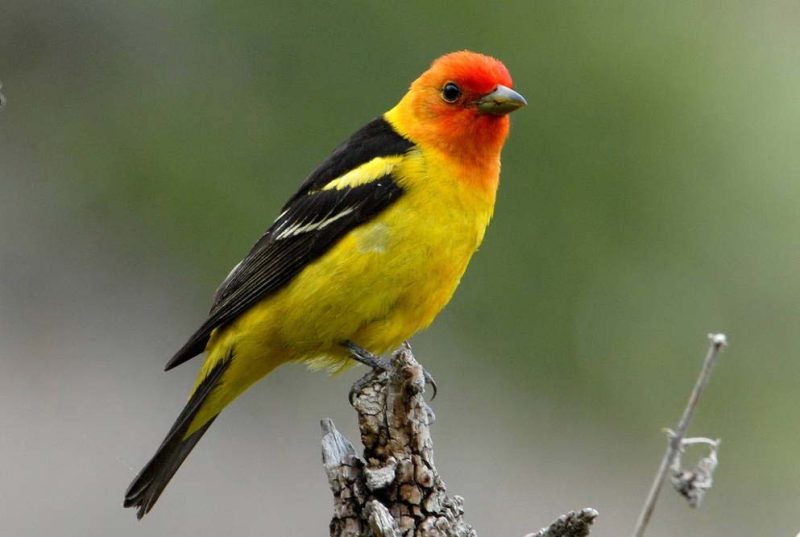
The Western Tanager is a stunning songbird that occasionally appears in Texas, especially during migration. Adult males are particularly eye-catching, with a fiery reddish-orange head, bright yellow body, and black wings with white wing bars. Females and immature males are less vibrant, usually yellow-green with faint orange hints on the face.
This tanager measures about 6.5 to 7.5 inches long, with a stocky body and short, thick bill. Unlike orioles, Western Tanagers are more robust and less slender, but their bright colors still make them stand out. Their diet includes insects, berries, and fruit, and they often forage quietly among the treetops.
In Texas, Western Tanagers are considered uncommon visitors, typically seen during spring and fall migration. They are more commonly found in the western states during the breeding season, but birders in Texas can occasionally spot them in woodlands, parks, or even backyard feeders. Their rarity makes them a highly sought-after bird for local birdwatchers.
Despite their vibrant appearance, Western Tanagers are often more inconspicuous than orioles. They may remain high in the canopy, where their yellow plumage blends with sunlit leaves. Their song is a series of short, robin-like phrases, adding to their charm when encountered during migration stopovers in Texas.
Summer Tanager (Piranga rubra)
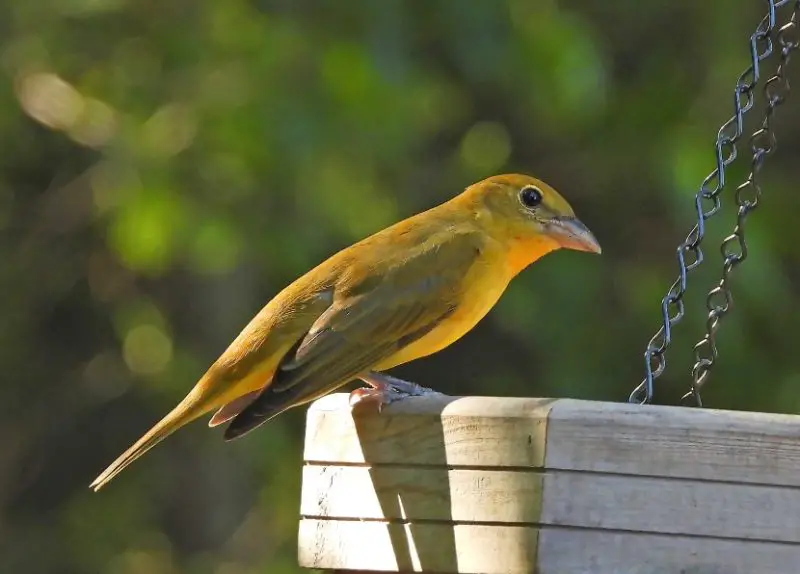
The Summer Tanager is unique among North American songbirds because adult males are entirely red, but many appear orange-red, especially in bright sunlight. Their uniform coloration makes them easy to distinguish from other species. Females and immature males, however, are yellow-orange overall, sometimes showing patches of both red and yellow as they molt into adult plumage.
These tanagers are medium-sized, about 6.5 to 7 inches long, with a stout body and thick, pointed bill. Unlike some brightly colored birds that are constantly active, Summer Tanagers often perch quietly, giving birders a good opportunity to admire their colors. Their diet consists largely of insects, particularly bees and wasps, which they skillfully catch and subdue before eating.
In Texas, Summer Tanagers are widespread during the breeding season, inhabiting open woodlands, pine forests, and riparian areas. They are especially common in the eastern half of the state, but they can be found in many habitats that provide tall trees for nesting. During migration, they can also be seen throughout Texas, heading toward their wintering grounds in Central and South America.
Their song is a series of melodic phrases, often compared to a softer, more refined version of the American Robin’s song. Males frequently sing from treetops, while females are more secretive. For Texans, the Summer Tanager is one of the most reliable orange-red birds to spot during the warm months, offering both beauty and a sweet musical presence.
American Robin (Turdus migratorius)
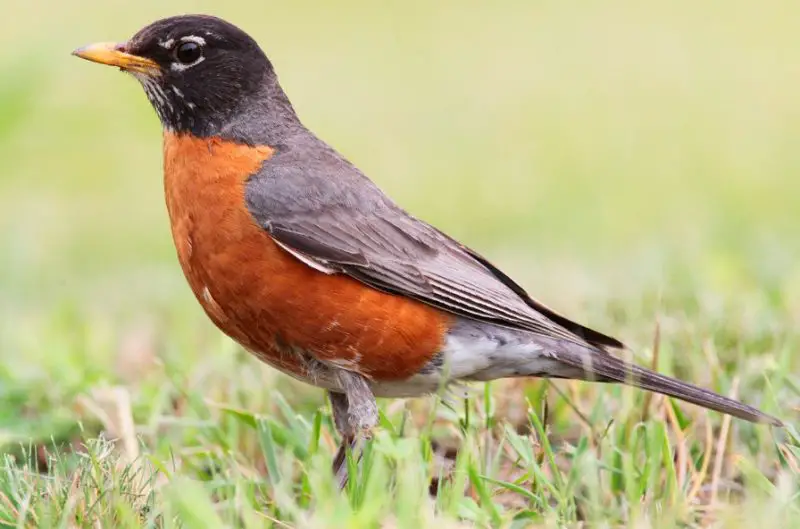
The American Robin is one of the most recognizable birds in North America, and in Texas, it brings a splash of warm color with its rusty-orange breast. Its grayish-brown back and head contrast beautifully with its bright underparts, making it easy to identify even from a distance. Both males and females share this orange belly, though males often appear slightly more vibrant.
This species is medium-sized, measuring about 9 to 11 inches in length, with a wingspan of 12 to 16 inches. Its upright stance, round body, and cheerful song make it a familiar sight in both wild and urban landscapes. Robins are often seen hopping across lawns in search of earthworms, which form a major part of their diet.
In Texas, American Robins are most common during the winter months, when flocks move into the state from farther north. However, some populations remain year-round in central and eastern Texas, especially in areas with ample food and water. Their adaptability allows them to thrive in city parks, gardens, woodlands, and farmland edges.
American Robins also serve as an early sign of spring in many parts of the U.S., as they often return northward before other migratory birds. In Texas, their presence throughout the cooler months provides birdwatchers with reliable opportunities to spot orange plumage even outside of the oriole and tanager migration seasons.
Blackburnian Warbler (Setophaga fusca)
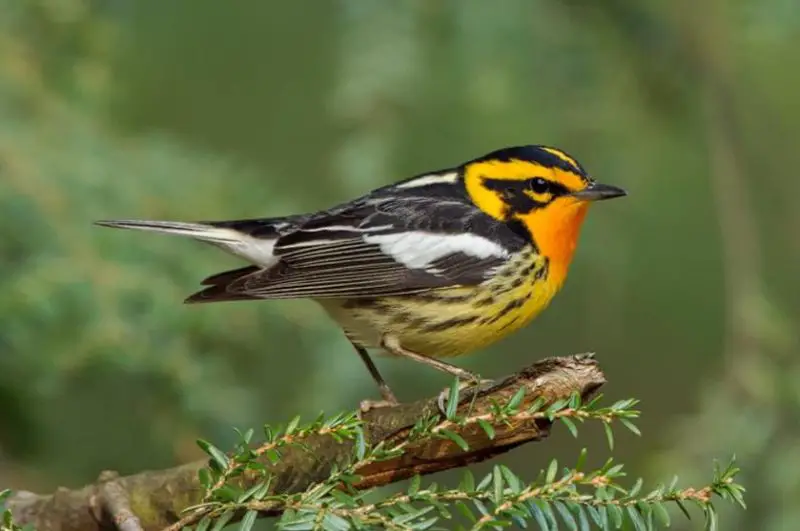
The Blackburnian Warbler is a small, migratory songbird known for its fiery orange throat and face. Adult males are especially striking, with black upperparts, white underparts, and a blazing orange throat that glows in sunlight. Females and immature birds are less intense, showing yellow-orange throats and softer contrast, but they still carry the characteristic warm tones.
These warblers are tiny, measuring only 4.5 to 5 inches long, with a slim build and fine, pointed bill. They are active feeders, often flitting high in the treetops while gleaning insects from leaves and branches. Their constant movement makes them a challenge to observe closely, but their glowing orange throats give them away.
In Texas, Blackburnian Warblers are mainly seen during spring and fall migration, as they travel between northern breeding grounds and their South American wintering areas. They are most often spotted in woodlands, forest edges, and parks, where they briefly stop to rest and feed. Their rarity in the state makes them a treasured sight for birders.
Their song is a high, thin series of notes that rises to a sharp, piercing climax. This call can be difficult to hear for some people, but it’s a reliable way to detect them during migration. For Texans, catching a glimpse of this glowing orange warbler is often a once-in-a-season experience.
Flame-colored Tanager (Piranga bidentata)
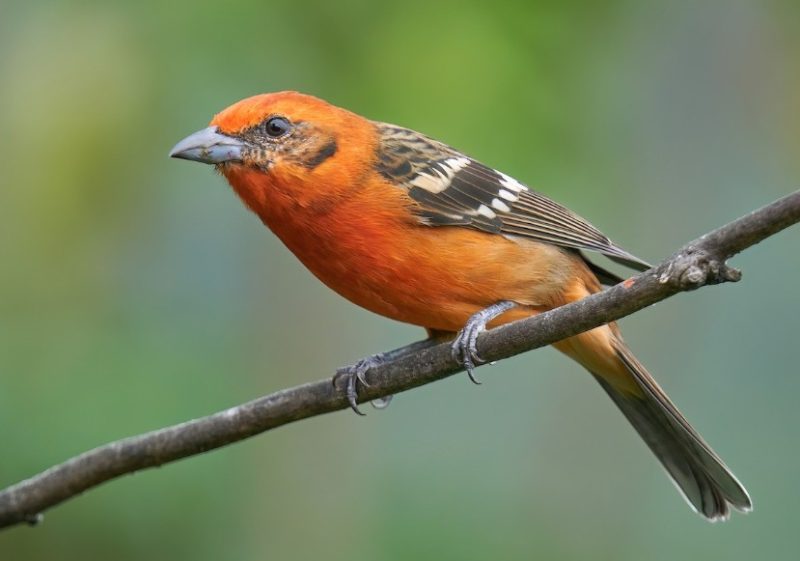
The Flame-colored Tanager is a rare but spectacular visitor to Texas, particularly in the Rio Grande Valley. Adult males live up to their name, with plumage ranging from deep reddish-orange to fiery orange-yellow across their bodies. Females and immatures are paler, often showing more yellow tones, but they still carry the warm, flame-like coloring that distinguishes the species.
This species is similar in size to other tanagers, measuring about 7 inches long with a sturdy body and thick bill. Their appearance is sometimes confused with the Western Tanager, but the Flame-colored Tanager’s overall orange wash and lack of a black back help separate the two. Their diet includes insects, fruit, and berries, making them versatile feeders.
In Texas, Flame-colored Tanagers are considered accidental or rare visitors, usually appearing in the southernmost parts of the state near Mexico. Most sightings occur in the Rio Grande Valley, particularly in areas with dense woodlands and fruiting trees. Because of their rarity, they attract birdwatchers from across the country whenever one is reported.
Their vocalizations are a series of rich, melodic whistles, somewhat similar to the song of a Western Tanager but with more varied phrases. When observed in Texas, they often join mixed flocks of other tanagers or orioles, adding a burst of fiery color to the scene. Spotting a Flame-colored Tanager in Texas is a memorable event for any birder, as it represents a rare and extraordinary encounter.
Best Time and Place to See Orange Birds in Texas
The best time to see orange birds in Texas depends on the species, but in general, spring and fall are the most rewarding seasons. During migration in April–May and September–October, many orioles, tanagers, and warblers pass through the state, making parks and wooded areas hotspots for sightings. These months also bring the most diversity, as both local breeders and long-distance migrants overlap.
For year-round opportunities, the Rio Grande Valley in South Texas is unmatched. Species like the Altamira Oriole and Hooded Oriole are permanent residents, offering consistent sightings in wildlife refuges, state parks, and even suburban gardens. West Texas also provides a unique chance to see Scott’s Orioles in desert landscapes, particularly where yuccas and agaves dominate.
Urban birdwatchers in central and eastern Texas can attract Baltimore Orioles, Orchard Orioles, and Summer Tanagers to their backyards by offering nectar feeders, orange slices, and berry-producing plants. For rare species like the Flame-colored Tanager or Blackburnian Warbler, the best strategy is to follow local birding reports, as these birds appear only occasionally and often attract crowds of enthusiasts.
FAQs about Orange Birds in Texas
What orange birds can I see in Texas year-round?
Altamira Orioles and Hooded Orioles are year-round residents in South Texas, especially in the Rio Grande Valley. Vermilion Flycatchers are also permanent in southern and western regions. These species provide consistent opportunities for birders even outside migration seasons.
When is the best season to see orioles in Texas?
The peak season for most orioles, including Baltimore, Orchard, and Bullock’s Orioles, is spring and summer. They arrive in Texas during April and May to breed or migrate north, and many remain through the summer before heading south by late August or September.
Are orange birds common in Texas deserts?
Yes, species like Scott’s Oriole and Vermilion Flycatcher are adapted to desert and semi-arid environments in West Texas. They thrive in areas with yuccas, agaves, and open scrubland, making desert hikes rewarding for birdwatchers.
How can I attract orange birds to my backyard in Texas?
Providing nectar feeders, orange halves, and jelly can attract orioles, while planting berry bushes and native fruiting trees creates a natural food source. Summer Tanagers and Vermilion Flycatchers may also visit yards with insect-friendly habitats, as they primarily feed on flying insects.
What is the rarest orange bird to see in Texas?
The Flame-colored Tanager is one of the rarest orange birds in Texas. It is typically a resident of Mexico and Central America, but occasionally appears in the Rio Grande Valley. Because of its rarity, sightings often make local birding news and attract visitors from across the country.


